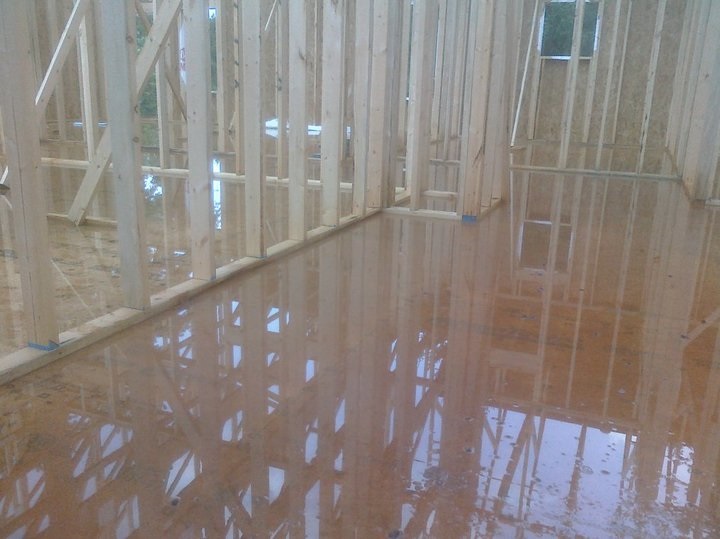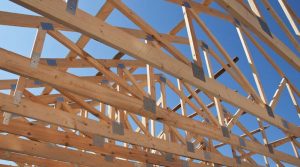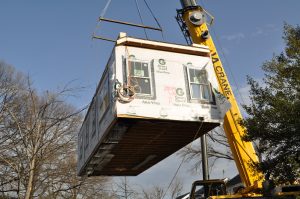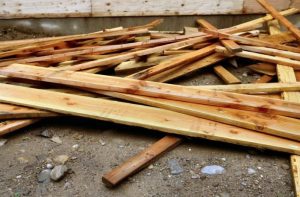If You Think Off-Site Construction is Risky, Try Traditional Construction


When many people think about building a home today, they naturally think about what they have seen in the past. The old, traditional way of home building. This means working with a home builder to develop a home plan, sign a contract, create allowances for items such as tile, flooring, cabinets, counter tops, etc., and then scheduling construction to start. But the traditional way means that you are depending on a builder to find skilled employees to build your home. He is depending on his suppliers to meet material delivery schedules. He is hoping the weather holds to allow him to build and that water doesn’t saturate materials and cause other damage. There has to be a better way… and there is! Home buyers are doing the research and learning about off-site construction methods. But traditional builders continue to use the old ways, the ways they know. It’s time to make the move to modern methods of construction!
What is Off-Site Construction?
Off-site construction means building some or most of a home at a location other than its permanent location. While many builders resist new approaches to construction, they have been actually doing it for years. In the 1800’s, everything was built on the home site. This included windows and doors. Eventually, builders determined that windows and doors could be more efficiently and cost effectively built indoors in a factory and then delivered to the site. This concept grew to include more and more components that were historically built onsite.
 After another 100 years, the modern roof truss industry was born in 1952. Trusses took a while to be adopted by builders that were used to building roof rafters onsite for every home. Old school builders didn’t understand them and believed the way they had always done it was the best way. However, they soon discovered that their high strength-to-weight ratios permitted longer open spans, which meant greater flexibility in floor plan layouts. They could also be designed in almost any shape or size. Roof trusses were built off-site and their only restrictions were manufacturing capabilities, shipping limitations and handling considerations.
After another 100 years, the modern roof truss industry was born in 1952. Trusses took a while to be adopted by builders that were used to building roof rafters onsite for every home. Old school builders didn’t understand them and believed the way they had always done it was the best way. However, they soon discovered that their high strength-to-weight ratios permitted longer open spans, which meant greater flexibility in floor plan layouts. They could also be designed in almost any shape or size. Roof trusses were built off-site and their only restrictions were manufacturing capabilities, shipping limitations and handling considerations.
After the widespread adoption of roof trusses by site builders, floor trusses followed. And for all of the same reasons. The most important point to take away: trusses could be built off-site that were engineered to be stronger, were more cost effective, and could be installed onsite faster than rafters built the traditional way. The natural evolution of construction now leads us to the next leap forward.
RELATED: WHY BUYING A NEW HOME IS BETTER THAN FIXING UP AN OLDER HOME
The Next Leap Forward
There are several off-site methods of construction. One that is used by many production builders is panelized construction. What this means is that the skeleton of a home, the home’s framing, is broken down into panels (i.e. pieces or components) that are built on jigs or automated machines. These panels typically include walls and floors that are pre-assembled off-site and then trucked to the home site. There, they are assembled and then roof trusses are added. Instead of a home’s frame being built onsite, one stick at a time, the home is actually assembled by placing the prefabricated panels together. This can save several days in the process and lead to better quality. However, everything else still has to get done onsite. An average home can save 2-3 days in the build schedule using prefabricated open panels.
 Modular construction means more, if not most, of the pieces used to build a home are pre-assembled off-site. Sub-components and components are assembled into modules. These large modules are then shipped to a home site on carriers by large trucks and assembled in LEGO-like fashion on a foundation (that could also have been prefabricated off-site). What modular construction does is reduce or eliminate many of the risks in construction. These include:
Modular construction means more, if not most, of the pieces used to build a home are pre-assembled off-site. Sub-components and components are assembled into modules. These large modules are then shipped to a home site on carriers by large trucks and assembled in LEGO-like fashion on a foundation (that could also have been prefabricated off-site). What modular construction does is reduce or eliminate many of the risks in construction. These include:
- Schedule Risks – By building modules indoors at the same time the excavation and foundation is being completed at the site, the overall construction schedule is reduced. Subcontractor availability and weather can be removed as a primary cause of delay.
- Scope Creep/Change Orders – When building outside over a long period of time a home buyer see things that they want to change or wants different (i.e. more expensive) items than the contractor for. It is not uncommon for a custom home built onsite to cost 30% more than the original contracted amount.
- Weather Issues – By moving much of the construction to a manufacturing setting, what would normally take months can be completed in days. The weathers impact on schedule, while not eliminated, can be greatly reduced.
- Reduce Skilled Labor Dependencies – By turning construction into a manufacturing process, unskilled labor can be trained and then closely supervised. This means quality is improved while using the available labor that is concentrated in one location to construct many homes.
Traditional Construction is Getting Riskier
 While many still subscribe to the thought that the old way is the least risky way, that just isn’t true any longer. The traditional approach just isn’t the best way to manage risk when building a custom home today. Subcontractors are busy and suffering from an extreme lack of skilled labor. When you add the unpredictability of weather to their already precarious position of waiting to see who actually shows up to work each morning at a jobsite, each morning becomes a roll of the dice.
While many still subscribe to the thought that the old way is the least risky way, that just isn’t true any longer. The traditional approach just isn’t the best way to manage risk when building a custom home today. Subcontractors are busy and suffering from an extreme lack of skilled labor. When you add the unpredictability of weather to their already precarious position of waiting to see who actually shows up to work each morning at a jobsite, each morning becomes a roll of the dice.
That same issue trickles down to everyone in the construction chain. Did the truck driver show up on Monday morning to deliver the load of lumber needed for the framing crew to get started? Did the trim get delivered for the trim carpenters get started? Today, why are we still doing home construction the same old way it has been done for almost 200 years?
Why Modular Means More
A modular home is designed to provide America’s home buyers with a well built, high quality home. It can do this at a value that can only be provided by utilizing the efficiencies of indoor factory construction. Combine that with outstanding design flexibility and high energy efficiency and you have a combination that far exceeds that of a home built using traditional, outdoor construction.
When you add in the additional characteristics of indoor construction, better schedule control, and better material management, modular is the better choice. The old way of building a home isn’t the best way to build a home today. Today’s best custom home builders and learning there is a better way… the modern way: today’s modular construction!
The post If You Think Off-Site Construction is Risky, Try Traditional Construction appeared first on Impresa Modular.




